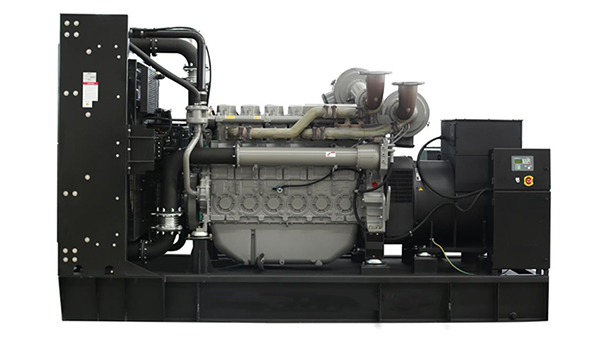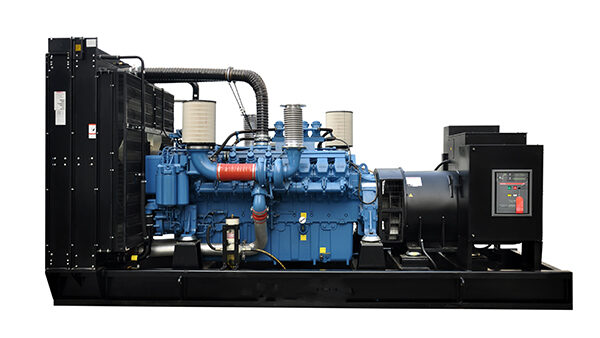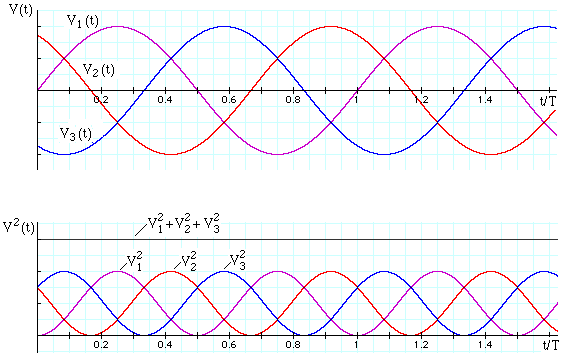3-Phase Generator
1. Brief of 3 phase generator
1.1 Construction: A three-phase generator set typically consists of an engine, a three-phase alternator, a voltage regulator, a control system, a cooling system, and a fuel system. The engine provides mechanical energy that drives the alternator, which in turn generates electrical energy. The voltage regulator ensures that the output voltage of the generator is stable and within acceptable limits.
1.2 Phases: The 3-phase generator produces three AC voltages that are 120 degrees out of phase with each other. These voltages are designated as phase A, phase B, and phase C. The voltage between any two phases is higher than the voltage between one phase and neutral, which makes three-phase power more efficient for powering high-power motors and other electrical loads.
1.3 Ratings: Three-phase generator sets are rated by their power output, which is measured in kilowatts (kW) or megawatts (MW). The power rating of a generator set depends on the size of the engine, the size of the alternator, and the efficiency of the generator. Generator sets can be designed for a wide range of power outputs, from a few kW to several MW.
1.4 Applications: Three-phase gensets are commonly used in industrial, commercial, and large-scale residential applications. They are often used as a backup power source for critical facilities such as hospitals, data centers, and telecommunications networks. They are also used in remote locations or in situations where the electrical grid is not available or reliable.
1.5 Fuel types: Three-phase generator sets can be powered by a variety of fuels, including diesel, gasoline, natural gas, propane, and biogas. Diesel is the most common fuel for generator sets, as it is readily available and provides high fuel efficiency. Natural gas and propane are also popular fuels, especially in areas where they are readily available.
1.6 Maintenance: Like any mechanical equipment, three-phase DG sets require regular maintenance to ensure reliable performance. Maintenance tasks include oil and filter changes, fuel filter changes, air filter changes, and inspections of the cooling system, fuel system, and electrical system. Regular maintenance helps to prevent breakdowns and prolong the life of the generator set.
In summary, a three-phase generator set is a complex piece of equipment that is used to produce three-phase electrical power. It is designed to be reliable, efficient, and easy to maintain, and is used in a wide variety of industrial, commercial, and residential applications.


2. Output of 3 phase generator
The output voltage of a 3-phase generator is characterized by three different voltage waveforms, one for each phase. Each waveform has a peak voltage that is 120 degrees out of phase with the peaks of the other waveforms. The voltage between any two phases is known as the line voltage, while the voltage of each individual phase is known as the phase voltage. The relationship between the line voltage and the phase voltage is dependent on the configuration of the generator winding.
The magnitude of the output voltage of a 3-phase generator is directly related to the strength of the magnetic field produced by the generator’s rotor and the number of turns in its stator windings. The frequency of the voltage output is determined by the speed of rotation of the generator’s rotor and the number of magnetic poles in the rotor.
In general, the output frequency of a 3-phase generator is proportional to its rotational speed and the number of magnetic poles. The most common output frequency for industrial generators is 50 or 60 Hz. For example, a 4-pole generator running at 1500 RPM will produce a 50 Hz output frequency, while a 6-pole generator running at the same speed will produce a 60 Hz output frequency.
In most countries, the standard voltage for 3-phase power systems is 400V for industrial and commercial applications, and 230V for residential applications. This is for a 50Hz power system.
In the United States, the standard voltage for 3-phase power systems is 480V for industrial and commercial applications, and 277V for residential applications. This is for a 60Hz power system.
In some parts of South America and also in Philippines, the standard voltage for 3-phase power systems is 220V. In some cases, the use of lower voltage levels for 3-phase power systems may have been driven by economic considerations, as it may be more cost-effective to distribute power at lower voltages over shorter distances. Additionally, some countries may have adopted lower voltage levels for their 3-phase power systems due to the influence of neighboring countries or regional standards bodies.
Regardless of the specific voltage levels used, it’s important to ensure that the electrical equipment and machinery being used is designed to operate at the appropriate voltage and frequency levels.
3. The difference between 3 phase generator and single phase?

A single-phase generator produces a single alternating current (AC) waveform, whereas a three-phase generator produces 3 separate AC waveforms that are offset by 120 degrees from each other. This means that each phase of a three-phase generator reaches its peak voltage at a different time than the other two phases.
There are several implications of this difference:
3.1 Power output: Three-phase generators can produce more power per unit weight than single-phase generators, because the power is distributed across three phases instead of one. This is why three-phase generators are commonly used in industrial and commercial settings to power large machinery and equipment.
3.2 Efficiency: Three-phase generators are generally more efficient than single-phase generators because they produce a smoother and more constant power output, with less voltage drop and fewer power fluctuations.
3.3 Cost: Three-phase generators are generally more expensive than single-phase generators, because they are more complex to manufacture and require more specialized components.
3.4 Wiring: Three-phase generators require more complex wiring than single-phase generators, because they have three separate phases to connect. This can make installation more complicated and time-consuming.
4. Application of 3 phase generator
-Three-Phase Generators:
3-phase generators are commonly used in industrial and commercial settings to power large machinery, motors, and other equipment that require a lot of power.
They are also used for power distribution in large-scale systems such as power grids and renewable energy systems.
-Single-Phase Generators:
1-phase generators are commonly used in residential settings as backup power sources, for portable power, or in smaller industrial applications.
They are also used in smaller commercial and industrial settings, such as small businesses or for powering hand tools.
5. The advantages of 3 phase generator over 1 phase?
5.1 Harmonic Distortion: Three-phase generators produce a smoother and more stable output voltage with less harmonic distortion compared to single-phase generators. This is because the voltage waveforms of the three phases are evenly spaced and balanced, resulting in a more constant and stable output voltage.
5.2 Efficiency: 3-phase gensets are more efficient than single-phase gensets because they have a more balanced load across the three phases, which reduces the amount of energy wasted as heat. In addition, three-phase generators typically have a higher power output per unit of weight and volume than single-phase generators.
5.3 Fuel Efficiency: 3-phase generators are more fuel-efficient than 1-phase generators because they can produce more power with less fuel consumption. This is because 3-phase generators have a more balanced load across the three phases, which results in a more efficient use of fuel.
5.4 Durability: Three-phase generators are more durable than single-phase generators because they have a simpler design and fewer moving parts. This makes them less prone to mechanical failure and more reliable in harsh environments.
5.5 Flexibility: 3 phase generators are more flexible than 1 phase generators because they can be used in a wider range of applications. They are commonly used in industrial settings for large-scale power generation, but they can also be used for smaller residential or commercial applications.
6. When You Should Choose a 3-Phase Generator?
The choice between a three-phase generator and a single-phase generator depends on the specific application and power requirements. While three-phase generators are more powerful and efficient, they are also more complex and expensive to install and maintain. Single-phase generators are simpler and less expensive, but they may not be powerful enough for larger-scale applications.
Overall, three-phase generators offer many advantages over single-phase generators in terms of performance, efficiency, and durability. They are a preferred choice for many industrial and commercial applications where a reliable and efficient power source is required.
7. Our 3 phase generator for sale
MG Power offers a wide range of 3-phase generators with Cummins, Perkins, MTU, Doosan, and Yuchai engines, as well as Stamford, Leroy Somer, and EvoTec alternators to suit users’ specific needs.
Our DG sets range from 10KVA to 4000KVA, with options for open frame generators, soundproof enclosed generators, mobile generators or soundproof containerized generators.
Our 3 phase generators are suitable for various applications, from small businesses to large industrial sites, including construction, agriculture, mining, healthcare, data centers, etc.





